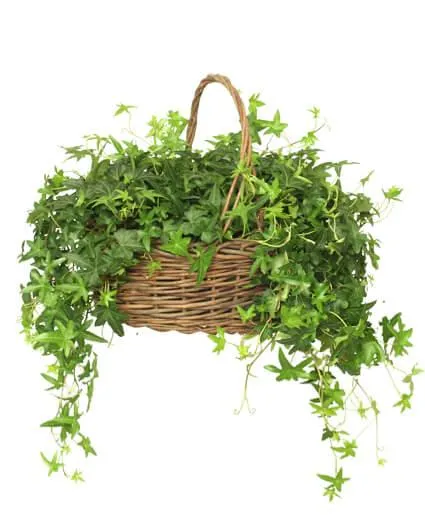Your Complete Guide to Buying English Ivy Plants
If you’re looking to add an English ivy plant to your home or garden, you’ve come to the right place. In this article, I’ll cover all the basics of English ivy care along with the best places to purchase these hardy, versatile vines. By the end, you’ll know exactly where to buy english ivy plants and have all the information you need to keep your new ivy thriving for years to come.
A Bit About English Ivy
English ivy (Hedera helix) is a very popular houseplant and outdoor ground cover known for its ability to grow virtually anywhere. Its dark green, glossy leaves and rambling vines make it a gorgeous option for hanging baskets, pots, or planting along the ground, walls, or trellises. English ivy is extremely low maintenance and nearly impossible to kill. It thrives in low or bright indirect light and tolerates a wide range of temperatures.
This vine originated in Europe and parts of Asia but has naturalized throughout much of North America as well. There are many cultivated varieties available with variegated leaves in shades of gold, Cream, and white. English ivy is somewhat invasive in some regions when grown outdoors, so check your local guidelines before planting. However, it poses no issues when grown as a houseplant and properly contained.
Where to Buy English Ivy Plants
Now that you know a bit about English ivy, here are the top places to purchase plants:
- Local nurseries and garden centers: Many independently owned nurseries and big box stores like Home Depot and Lowe’s stock English ivy year-round. Go during the spring and fall for the best selection.
- Online plant retailers: Websites like Amazon, Etsy, and leafandclay.com offer a huge variety of English ivy cultivars shipped right to your door. This is most convenient when your local stores don’t have what you want.
- Plant swap meets/sales: Attend events in your area to find English ivy cuttings, rooted plants, or divisions from other gardeners looking to share. These are sometimes free or low-cost.
- Garden centers with greenhouse areas: Larger garden centers that maintain indoor greenhouse displays year-round are a sure bet for English ivy. I’ve had great luck at places like Costco.
Tips for Choosing an English Ivy Plant
When selecting an English ivy plant, there are a few things to keep in mind:

- Inspect for overall plant health with dark green leaves and no signs of pests or disease. Leaves should be full and lush.
- Check that the soil is moist but not soggy. English Ivy prefers to be slightly on the drier side when watered.
- Make sure to purchase a plant that’s actively growing with new growth. Avoid any ivy that appears stagnant.
- Consider the size you need—clippings, 4-inch pots, hanging baskets, etc. Larger plants will fill out spaces faster.
- Inspect cultivars closely for traits like variegation patterns that appeal most to you.
With so many great options, you’re sure to find an English ivy plant that suits your space and care preferences.
How to Care for Your New English Ivy Plant
English ivy is famously low maintenance, but here are some basic tips to keep your ivy looking it’s best:
- Water when the top inch of soil is dry. English ivy prefers to be on the drier side versus soggy soil.
- Mist foliage occasionally if grown indoors to boost humidity levels ivy prefers.
- Give indirect, bright light but protect from direct sun which can scorch leaves. Rotate pots weekly for balanced growth.
- Fertilize in spring and summer with a diluted, all-purpose plant food every few months. Ivy is happy with moderate nutrients.
- Prune occasionally to shape and control size. Ivy grows rapidly during warm months. Cut back as desired.
- Repot only when roots overfill the container. Ivy tolerates being somewhat pot bound.
Follow these basic care steps and your English ivy will thrive indoors or outdoors for many seasons to come. Its versatility and hardiness make it a foolproof choice for any gardener.
Dealing With Pests or Diseases
Thankfully, English ivy is not prone to many major issues. However, a few pests can potentially bother ivy plants:
- Spider mites: Visible as tiny red specks, mites suck plant juices causing leaf damage. Spray with insecticidal soap or neem oil.
- Scale: Appear as hard, bumpy plates on leaves or stems. Carefully scrape off with fingernail or cotton ball dipped in isopropyl alcohol.
- Mealybugs: Fluffy white masses that suck sap. Spot treat with alcohol or horticultural oil. Good hygiene helps prevent infestations.
Rarely, ivy may contract fungal or bacterial leaf spot diseases. Throw away infected portions and improve air circulation/light exposure. Most issues can be avoided by choosing healthy starter plants.

English Ivy Uses Around the Home
English ivy lends itself to a variety of stylish, low-maintenance decor accents both indoors and out:
- Hang trailing vines in decorative pots by windows
- Train ivy up trellises, arbors or along fences
- Use as a lush groundcover border or under shade trees
- Top a moss pole for an easy DIY tropical look
- Drape vines on shelves, mantles or across furniture
- Fill decorative wall planters for a lived-in boho vibe
With such versatility, ivy adds natural beauty wherever you choose to showcase it. Enjoy your new ivy for years as a graceful, foolproof accent.
Final Thoughts
I hope this comprehensive guide has answered any questions you may have had about purchasing and caring for English ivy plants. Their adaptability and hardiness make ivy an excellent choice for home or garden. Be sure to select a healthy starter plant and follow the basic care suggestions outlined. With a little TLC, your English ivy will reward you with lush foliage for seasons to come.
Please let me know if you have any other questions! I’d be happy to offer additional advice based on over 15 years of experience gardening with English ivy and other houseplants.
Where to Buy English Ivy Plants
| Store | Price Range | Pot Sizes | Varieties Available |
|---|---|---|---|
| Home Depot | $5-15 | 4-10 inches | Classic, Variegated, Purple |
| Lowe’s | $4-12 | 4-8 inches | Classic, Variegated |
| Local Garden Center | $7-20 | 6-12 inches | Classic, Yellow, Trailing |
| Online Retailers | $10-25 | 6-14 inches | Classic, Variegated, Purple, Allegheny |
| Etsy | $15-30 | Small cuttings | Rare varieties |
FAQ
- Where can I buy an english ivy plant?
- Is english ivy good for indoor or outdoor use?
- What type of light and soil does english ivy prefer?
- How difficult is english ivy to care for?
- Does english ivy need pruning or trimming?
- What pests or diseases affect english ivy?
- Is english ivy toxic to pets?
You can find english ivy plants at most garden centers and nurseries. A lot of hardware stores will have them too. Garden shops basically always have english ivy available since it’s such a popular vine. You may even be able to get a clipping from a friend who already has an ivy plant.

English ivy can be grown both indoors and outdoors. It does well as a houseplant that you can hang in a pot. At the same time, it’s also a versatile outdoor plant that thrives in partial shade. However, be aware that ivy can grow aggressively outside, so you may wish to contain it in a planter.
Ivy grows best in bright, indirect light. It will tolerate low light somewhat, but may not vine as vigorously. As for soil, english ivy adapts to most well-draining potting mixes. It can even hang out in average indoor potting soil. The key is to avoid soggy wet soil, as ivy is prone to root rot in heavy moisture. A soil with good drainage is best.
In general, english ivy is considered one of the lowest maintenance houseplants. It’s almost impossible to kill! Ivy is pretty carefree as long as the soil dries out between waterings. You can even forget to water it occasionally without drama. Fertilize during the spring and summer growing seasons if you wish to encourage lush growth, but it’s not entirely necessary. Overall, ivy makes a great choice for beginner gardeners.
You typically don’t need to prune english ivy, but you can trim it to keep it shapely or contained. Snipping off stray stems can encourage the remaining vines to grow more full. You may also trim branches that spill over container edges back into the pot. Be aware that pruning can stimulate new growth, so you might end up with a bushier ivy than before!
Luckily, english ivy is not overly prone to major pest or disease problems. Occasional issues can include spider mites, scale insects, or mealybugs. However, these soft-bodied sucking insects are easily controlled with most common houseplant insecticides. Root rot from soggy soil may manifest as wilting, but proper drainage helps avoid this problem. Overall, ivy remains fairly pest and disease resistant.

Yes, while english ivy may look pretty hanging in your home, it can pose health risks if ingested by curious cats or dogs. All parts of the plant contain saponins, which can cause gastrointestinal upset, drooling, and vomiting in furry friends. If your pets like to chew plants, you may want to display your ivy out of reach as a precaution. Consulting your vet is also a good idea. It appears ivy can be particularly dangerous for small animals.
On the other hand, while english ivy has some toxicity risks for pets, it also has amazing air-filtering qualities to potentially improve indoor air quality. Kind of like a living filtration system! Maybe that’s why people find ivy so innately appealing as a houseplant. In summary, ivy remains one of the most popular and low effort indoor plants to this day. You really can’t go wrong by choosing english ivy for your home – it’s basically a sure thing to thrive even with neglectful care.
